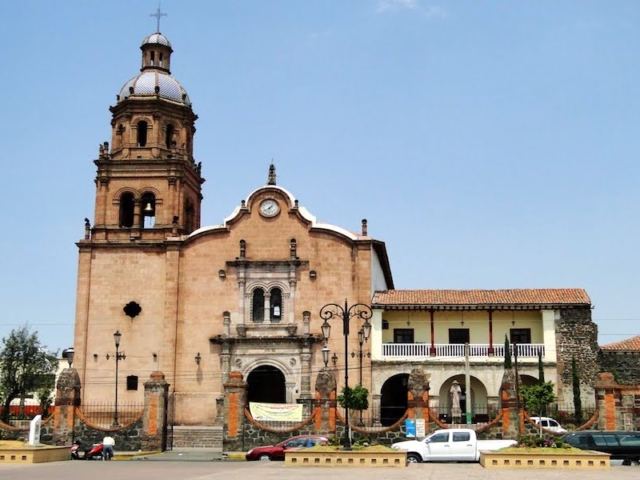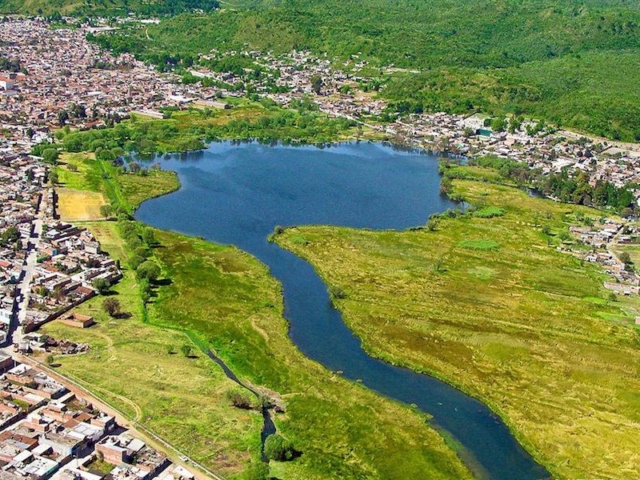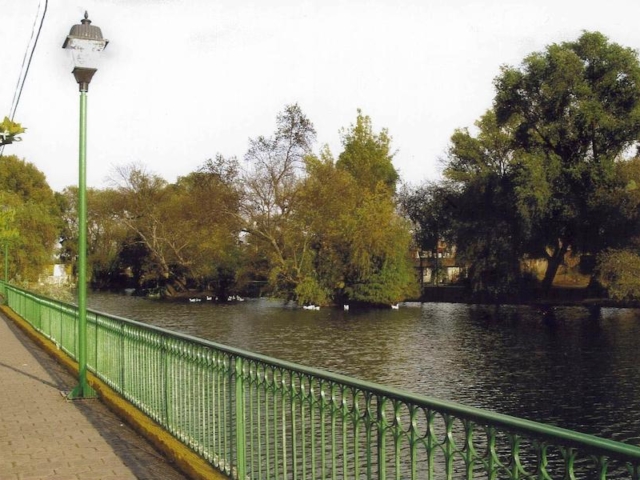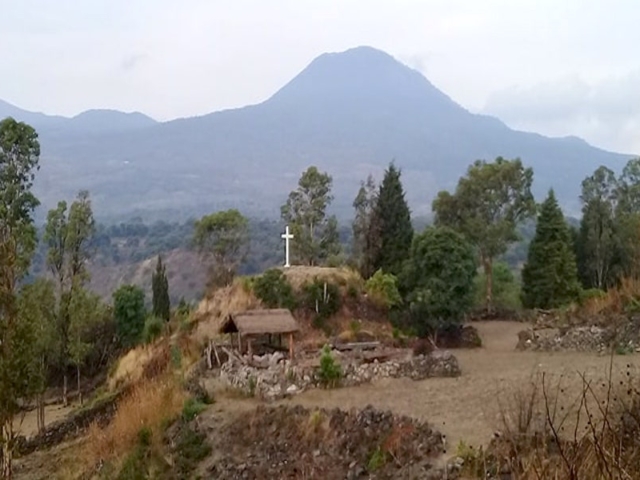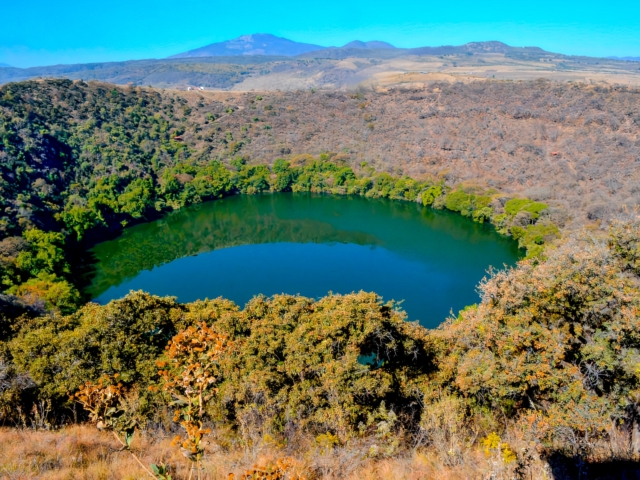Ubicación: Zacapu
The history of this town, located at 1,995 meters above sea level, is long and is dominated by the majestic “Cerro del Tecolote” (3,200 meters above sea level) and is sometimes covered in a white blanket of snow in winter. The first inhabitants of Zacapu settled in Naranxha and there they dedicated themselves to fishing and hunting. Later, a nomadic tribe of Chichimeca descent came from the north, seeking a place for their god Curicaveri and settling on the hill of “Mal País”, where they founded a town in the place designated with the name of Tzacapu Maruati. There were conflicts between the newcomers and the residents of Naranxha, who were subjugated by this new group, which they called Purépecha (the one who visits).
Zacapu was the main ceremonial and religious center of the flourishing empire. This nation did not escape the social problems of the arrival of Cortés to our nation, and in 1522 Captain Cristóbal de Olid, lieutenant of Cortés, carried out the conquest of Michoacán. The Tzacapu encomienda began in 1541 and religious men such as Friar Juan de San Miguel and Vasco de Quiroga (first bishop of Michoacán) arrived in the area who showed sincere interest in the Indians, to whom they taught letters, music and the Gospel. In the year 1548 Friar Jacobo Daciano said that it was God's will that a church be built in that place, and in this way what is now the city of Zacapu was born.
Today, in Zacapu, many traces of the past can be seen. You can visit the parish and the former convent of Santa Ana from the 16th century, with its unique sundial, or the parish of Perpetuo Socorro. Despite their difficult access in an area of volcanic rocks, the two archaeological sites – “Las Iglesias” and the “La Crucita” hill – with remains of pyramids or yácatas, await the visitor. Also worth a visit is the site of “Ojo de mar”, a small lake with its intense green water in the middle of a hill known as “la Alberca” de los Espinos.
The city of Zacapu organizes its lagoon festival in April. This proposal of gastronomic, artisanal and folkloric dance shows is a good opportunity to promote the products and resources of the lagoon, but also to raise awareness about the fragility of the environment and the preservation of species. This festival allows people to learn about all the varieties of fish and aquatic species that can be found in the swamp and is a good way to understand life on the shores of the Zacapu lagoon.
The church and convent were built around 1548. The first construction was directed by Friar Jacobo Daciano. Workers from Querécuaro, in the Cherán mountain range, were involved. Later, a second church and convent was built by Friar Pedro de Pila on the foundations of the…
Ver másIn ancient times, a people settled in this vast territory covered in a green blanket and surrounded by mountains, rocks and plenty of water. Being so close to this precious element, the inhabitants lived mainly from fishing and hunting. The abundant and fertile lands, irrigated…
Ver másIt has ponds built from the damming of the park's springs. In these ponds there are species similar to those in the Zacapu lagoon. It is one of the most visited places by local athletes, it has several water spaces, games, a volleyball and basketball court, as well as a…
Ver másThe hill of La Crucita, in Zacapu, was the most important center in the area, where the priests and chieftains resided. In this archaeological zone you can find vestiges of palaces, a castle, yácata foundations, and ruins of houses, baths, and a pyramid with thirteen thrones. The stepped slope…
Ver másMalpaís Prieto. Also known as The Lost City, it was established on the most recent volcanic lava flow and is perhaps the most characteristic example of the urbanization phenomenon of the Milpillas phase, having only been occupied during this phase (1250-1450 AD). On land devoid of flat areas, soils…
Ver másAlso known as El Ojo de Mar, it is an impressive natural site located in the Ciénega de Zacapu, Michoacán. This body of fresh water is located inside the crater of an extinct volcano and is fed by underground currents, which gives it its uniqueness. The Los Espinos pool…
Ver más
